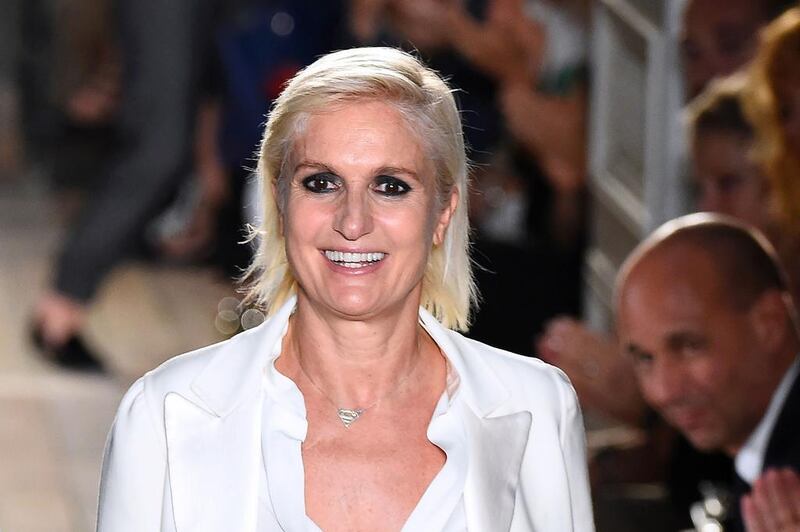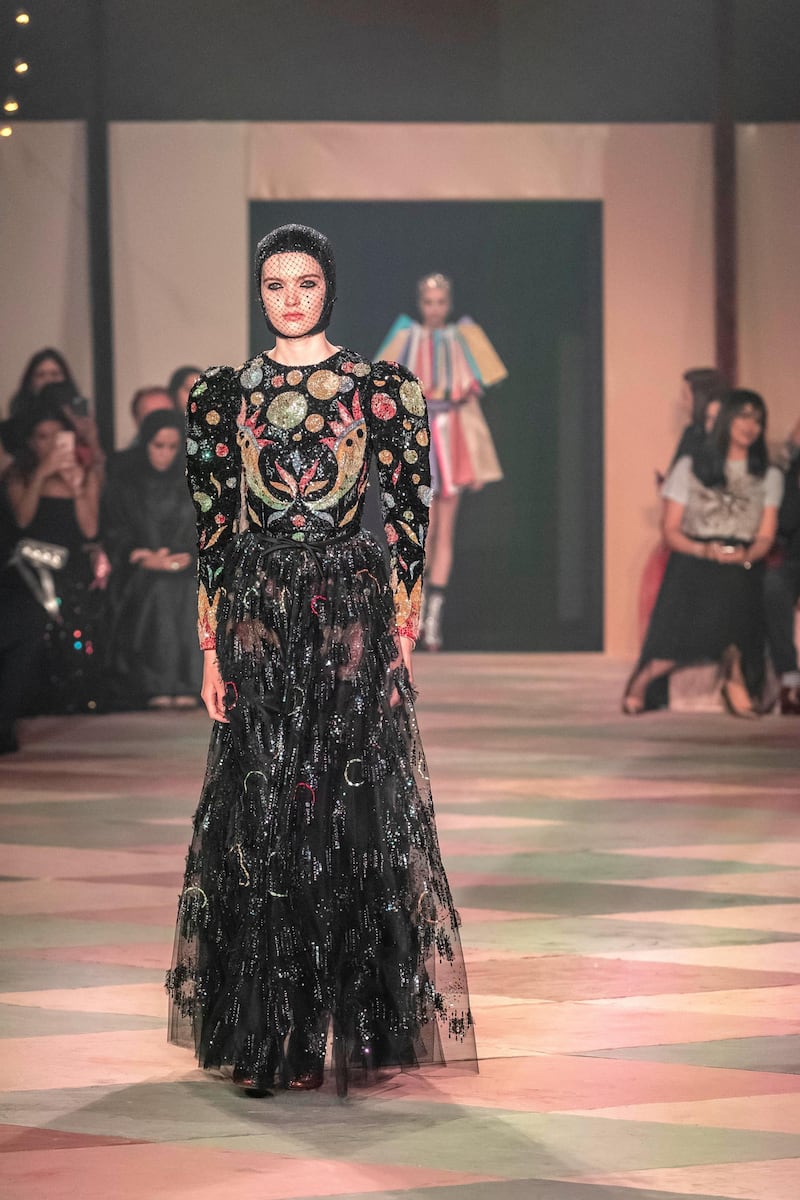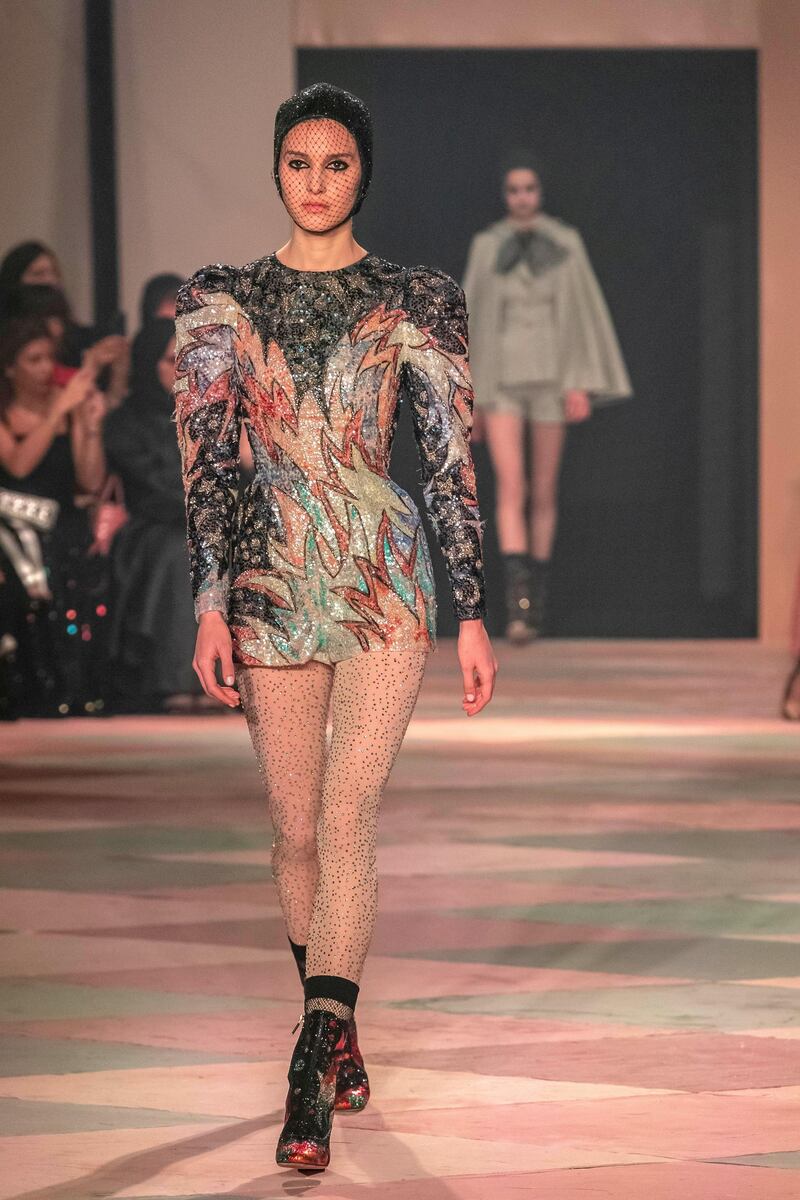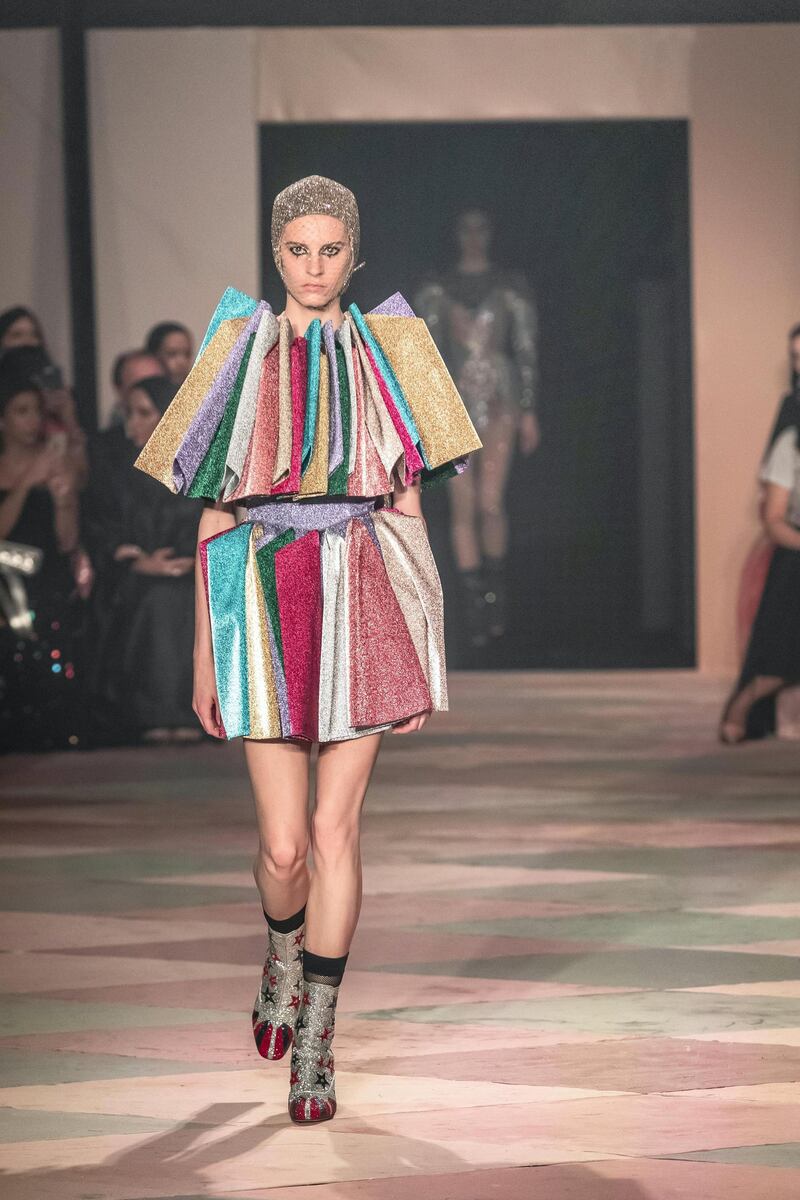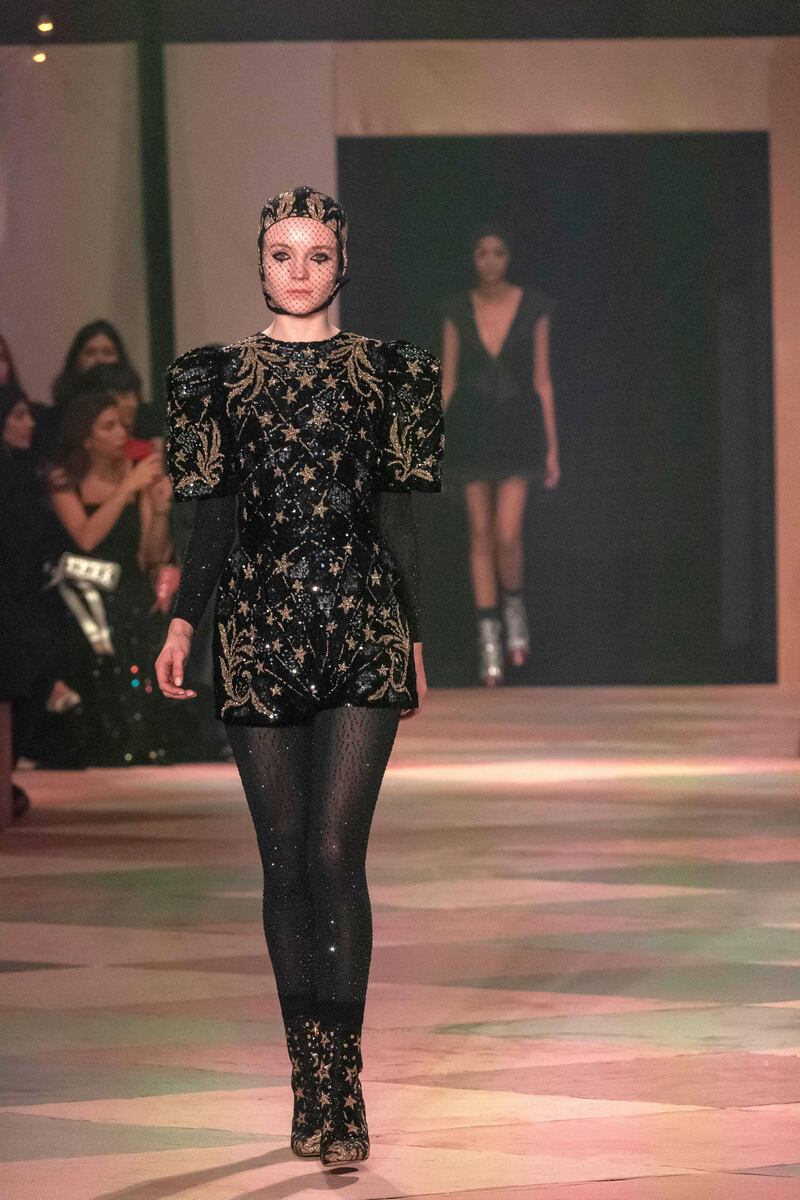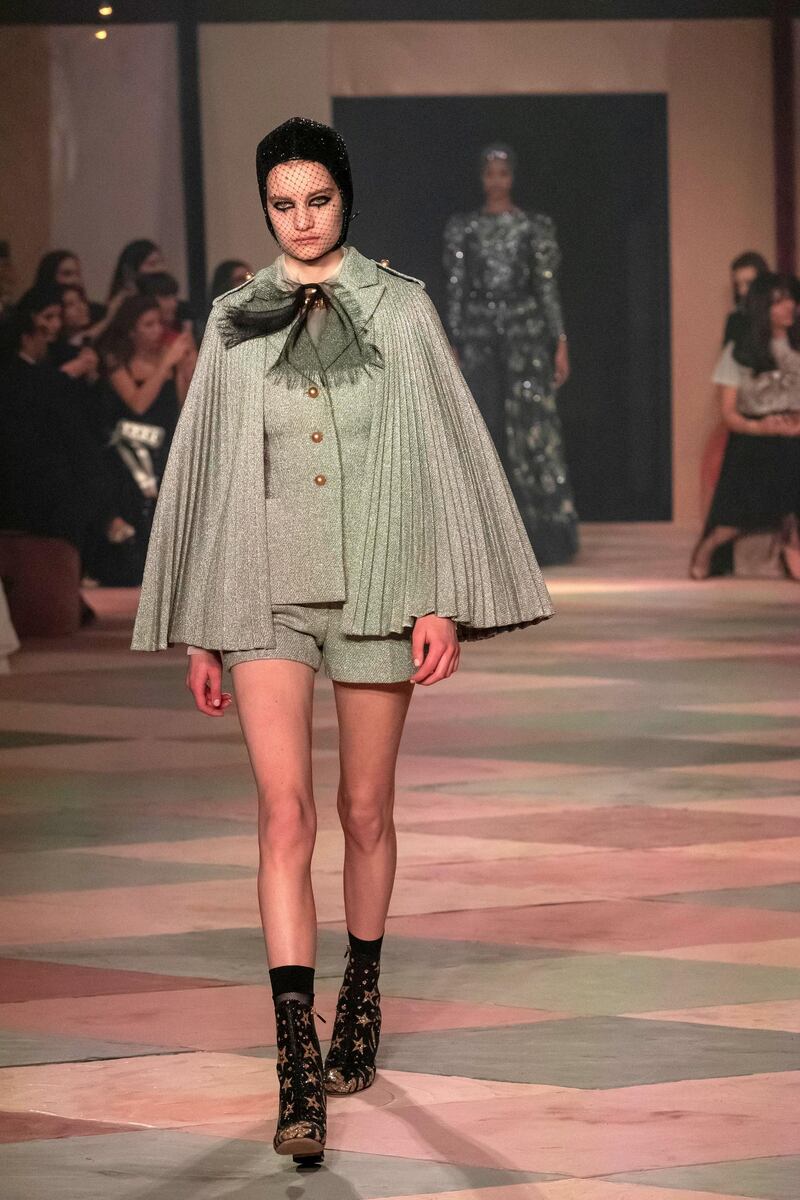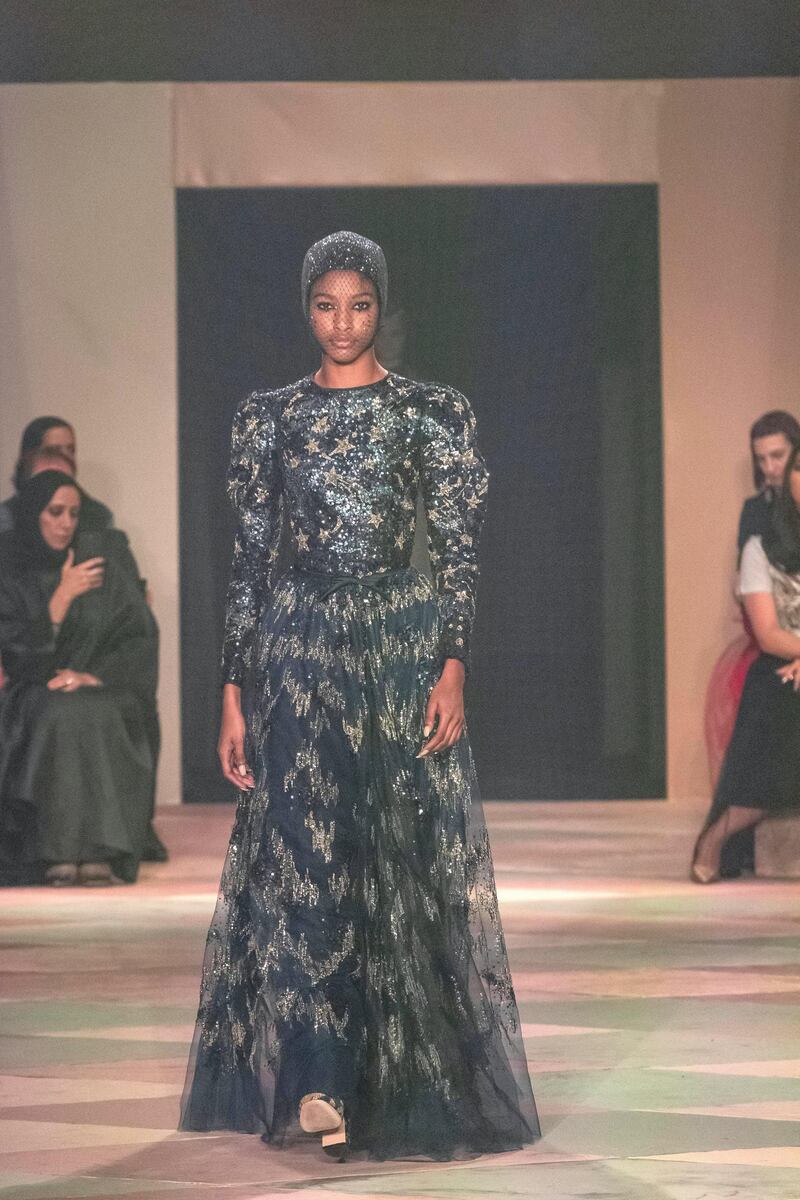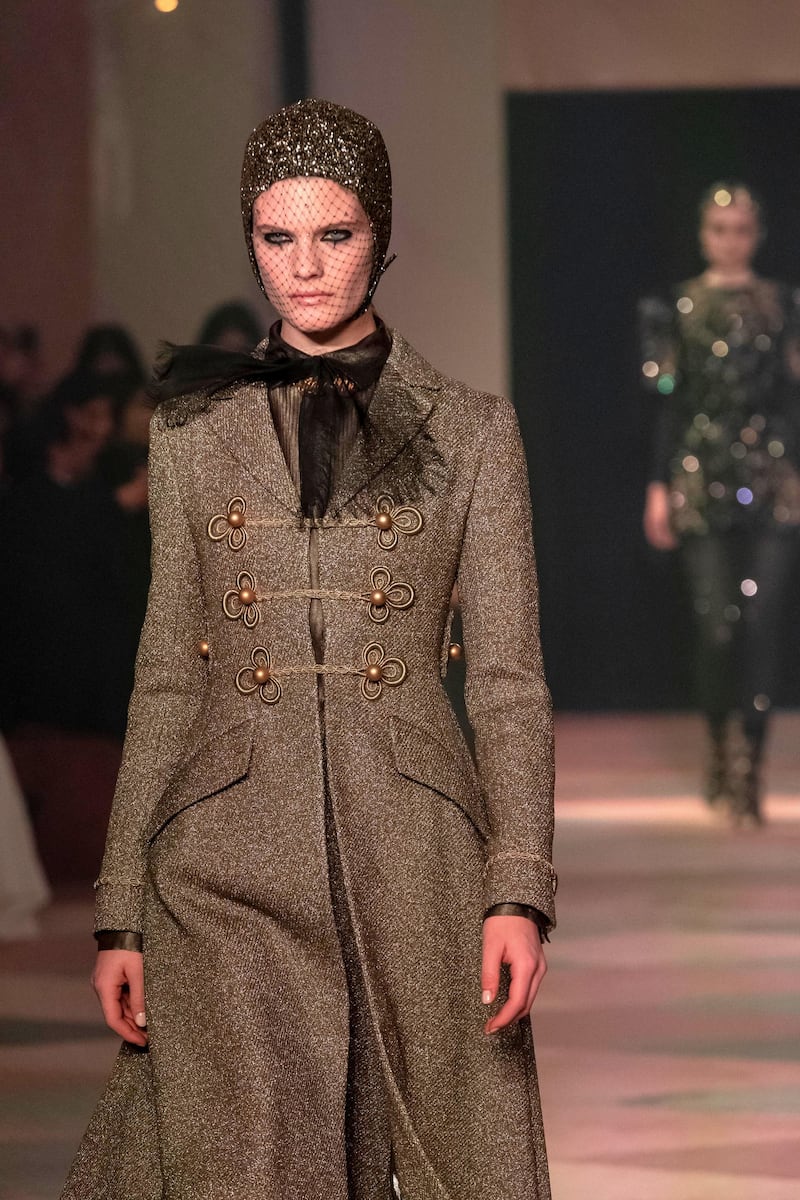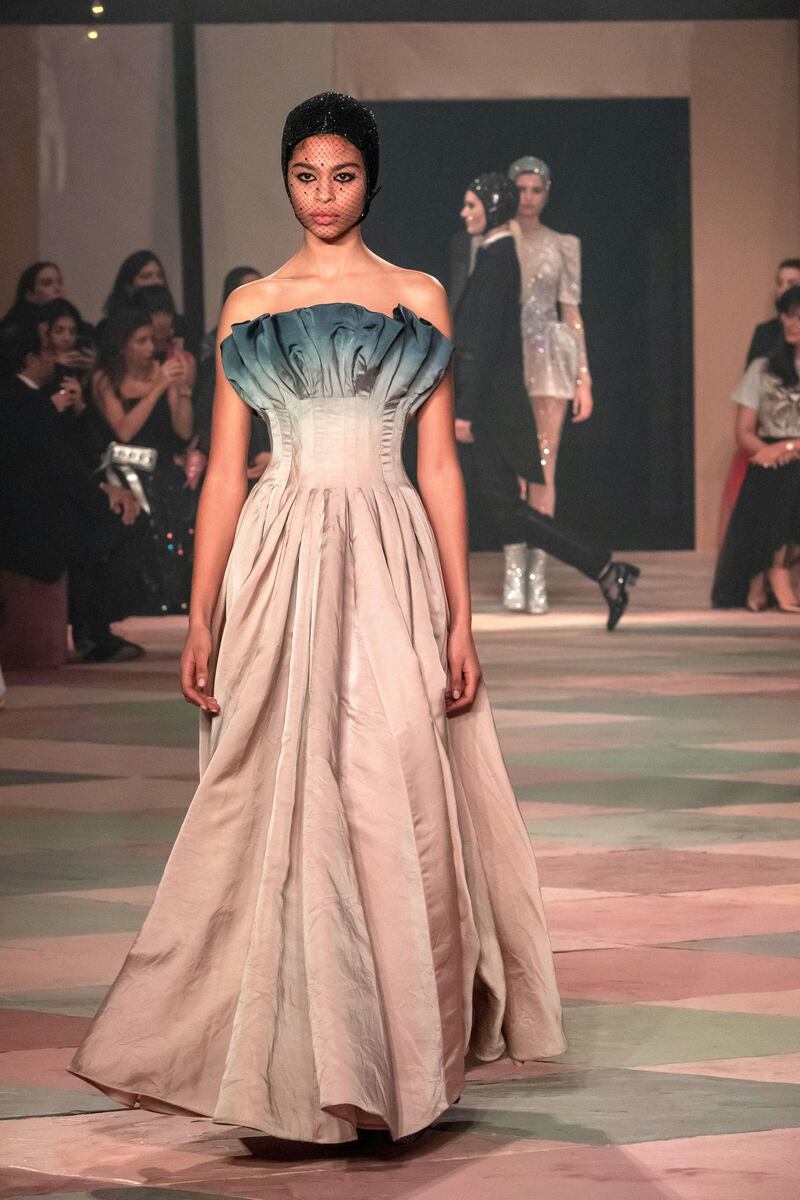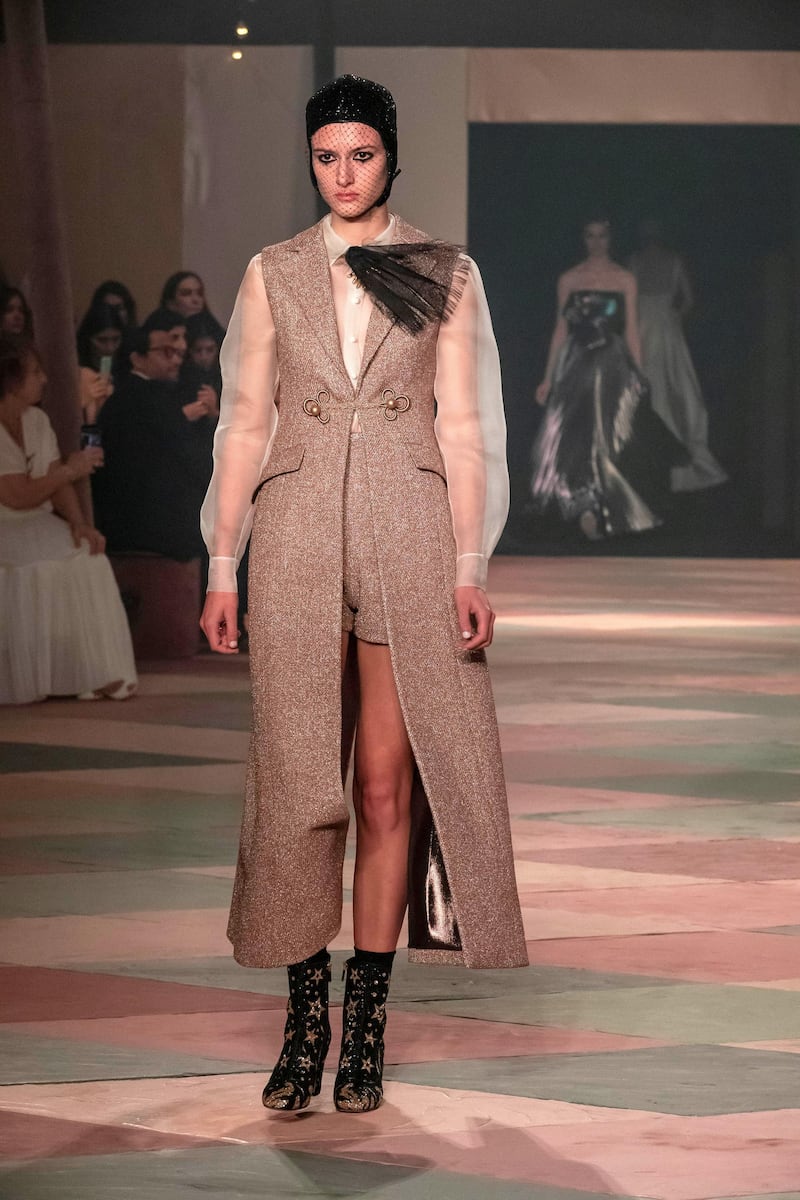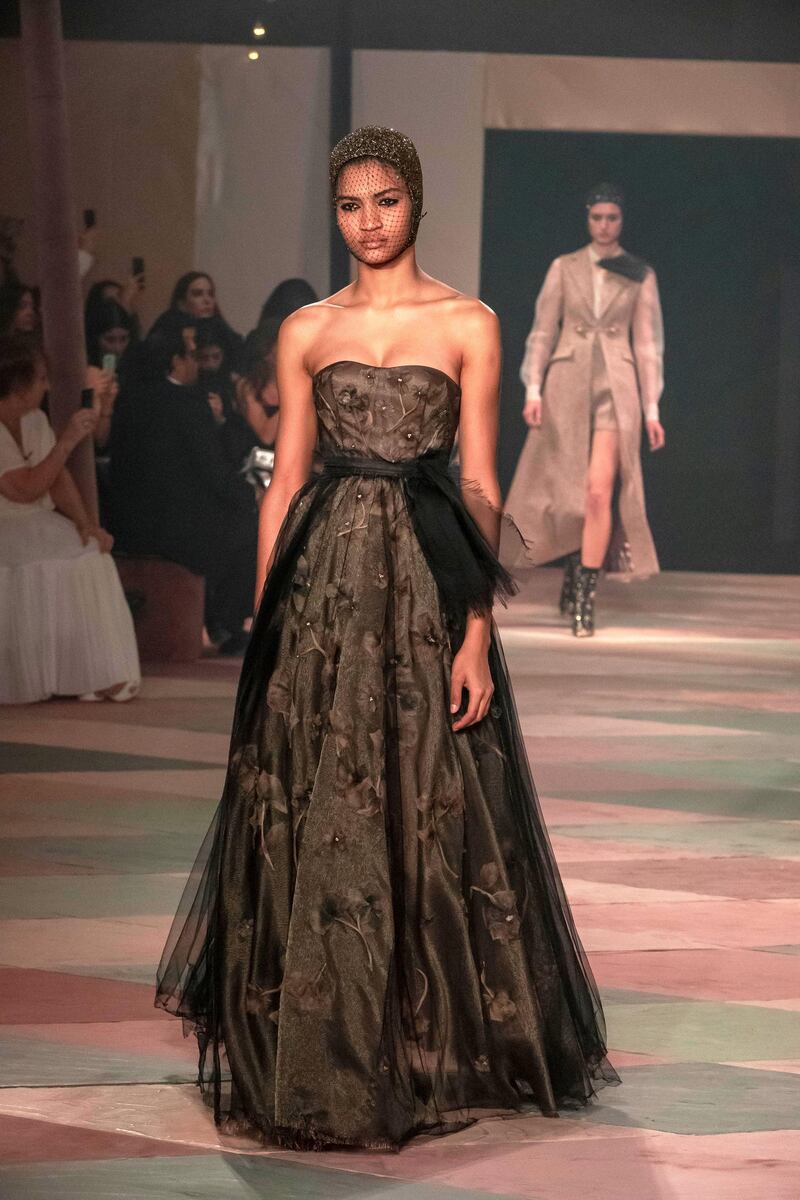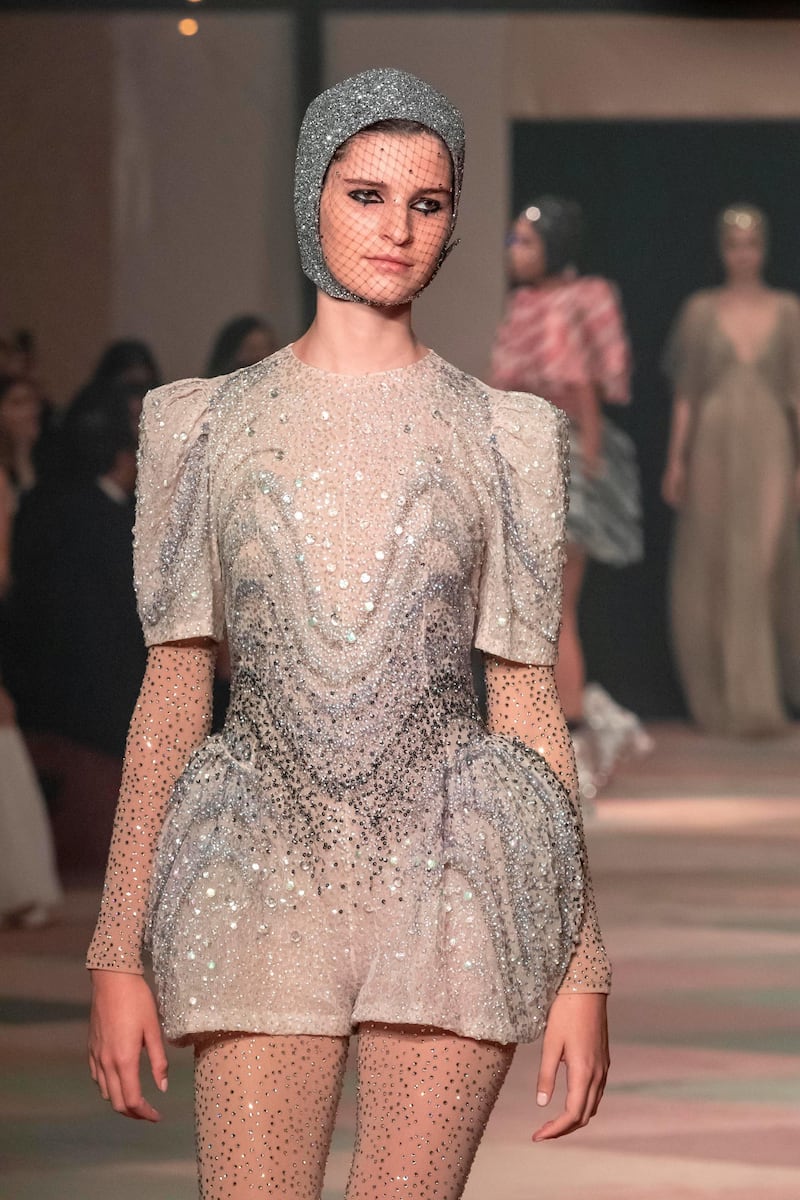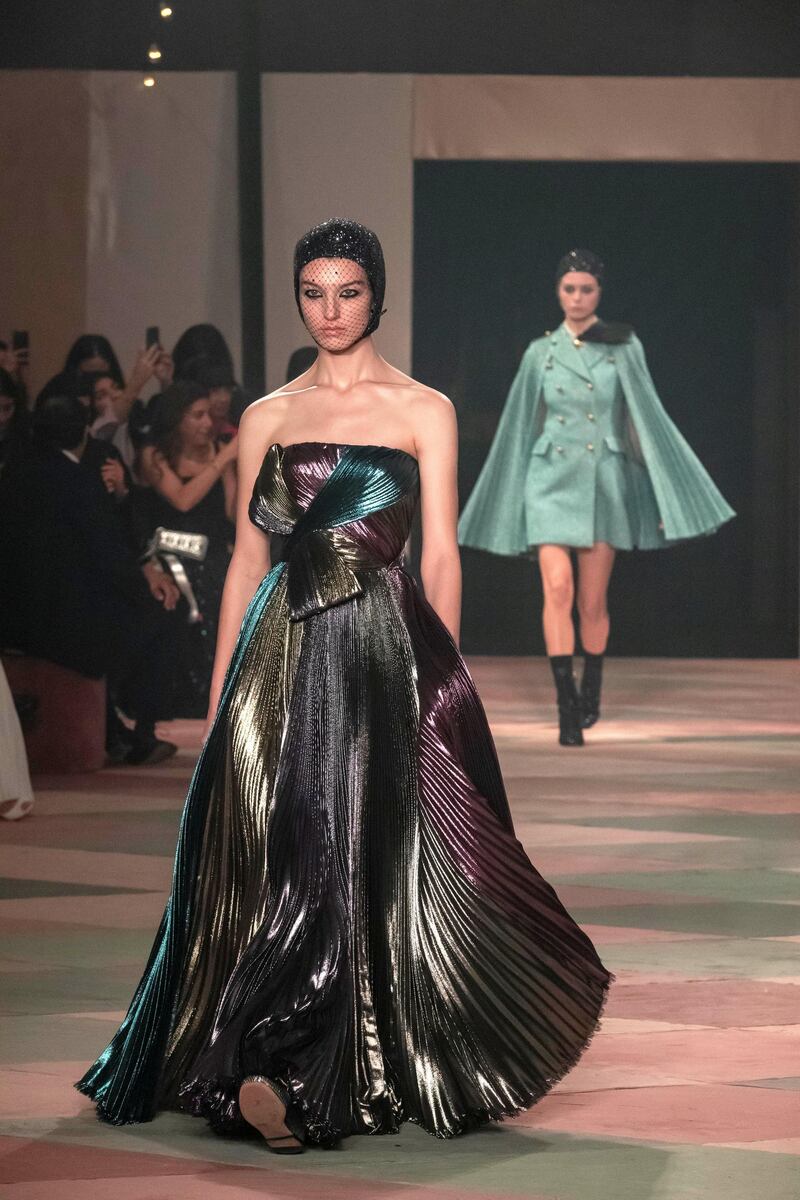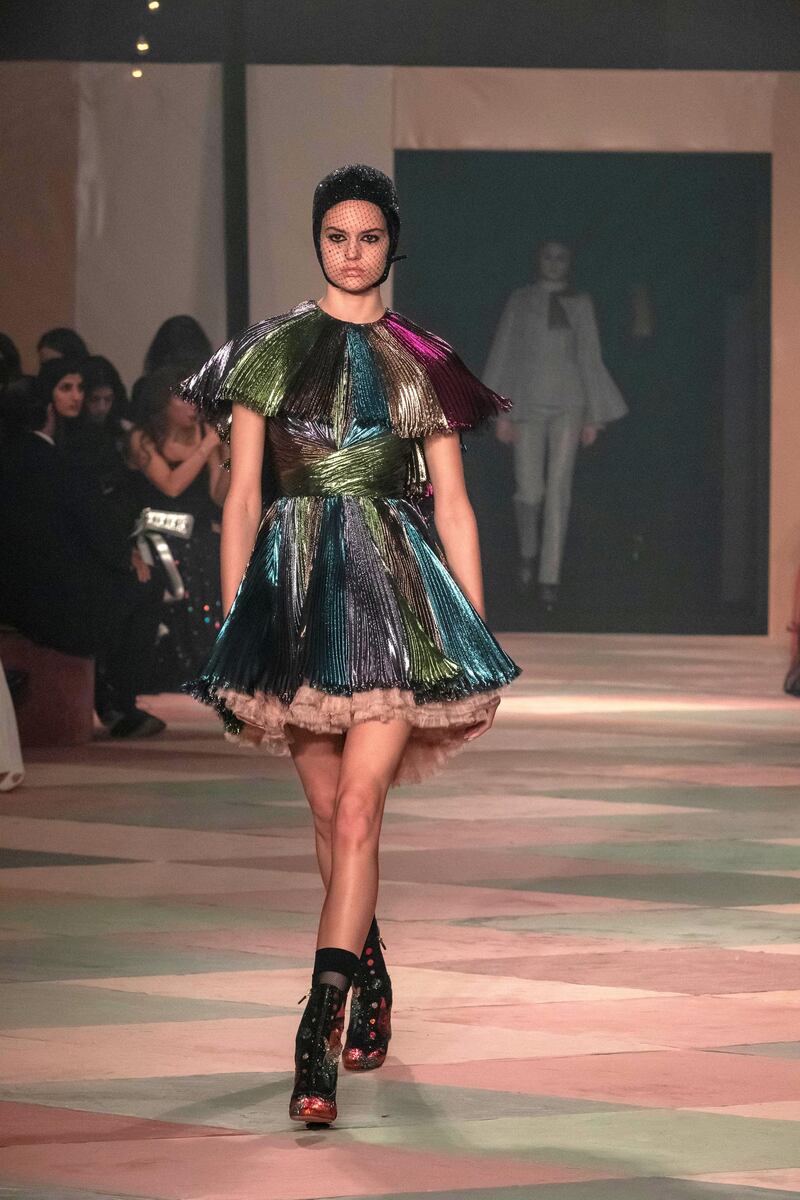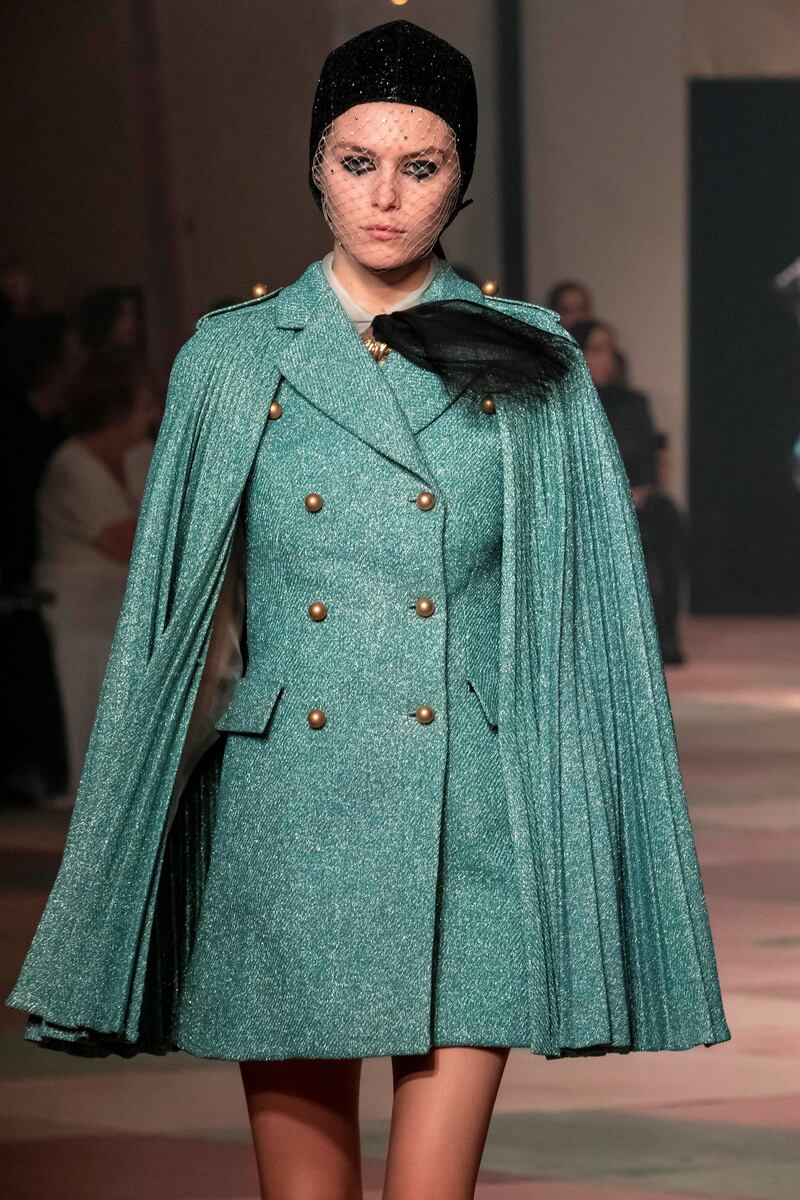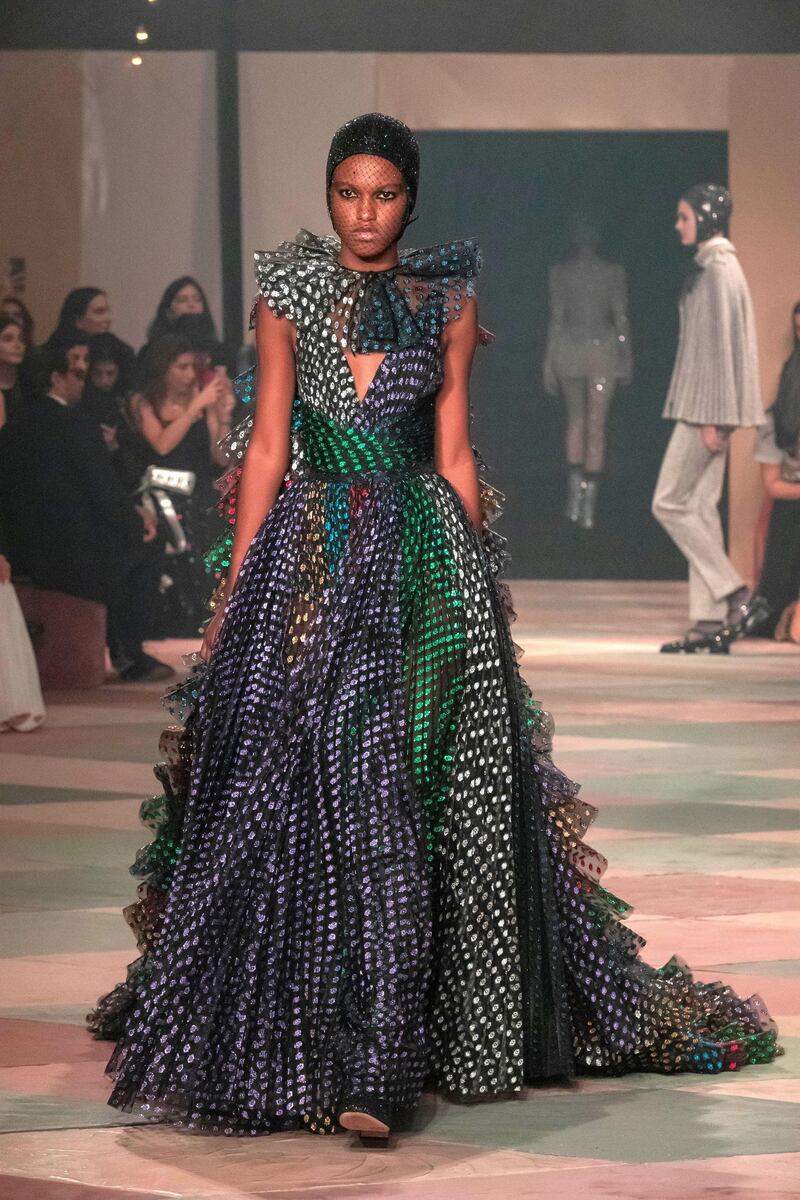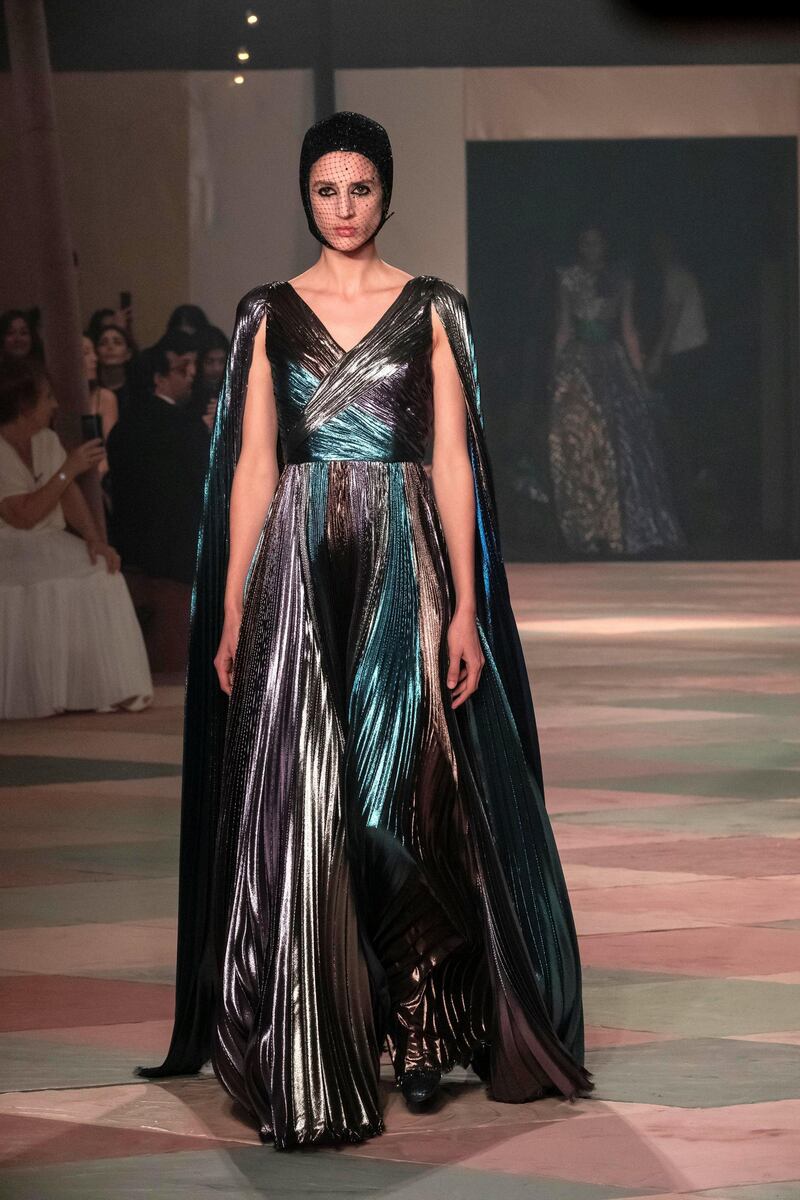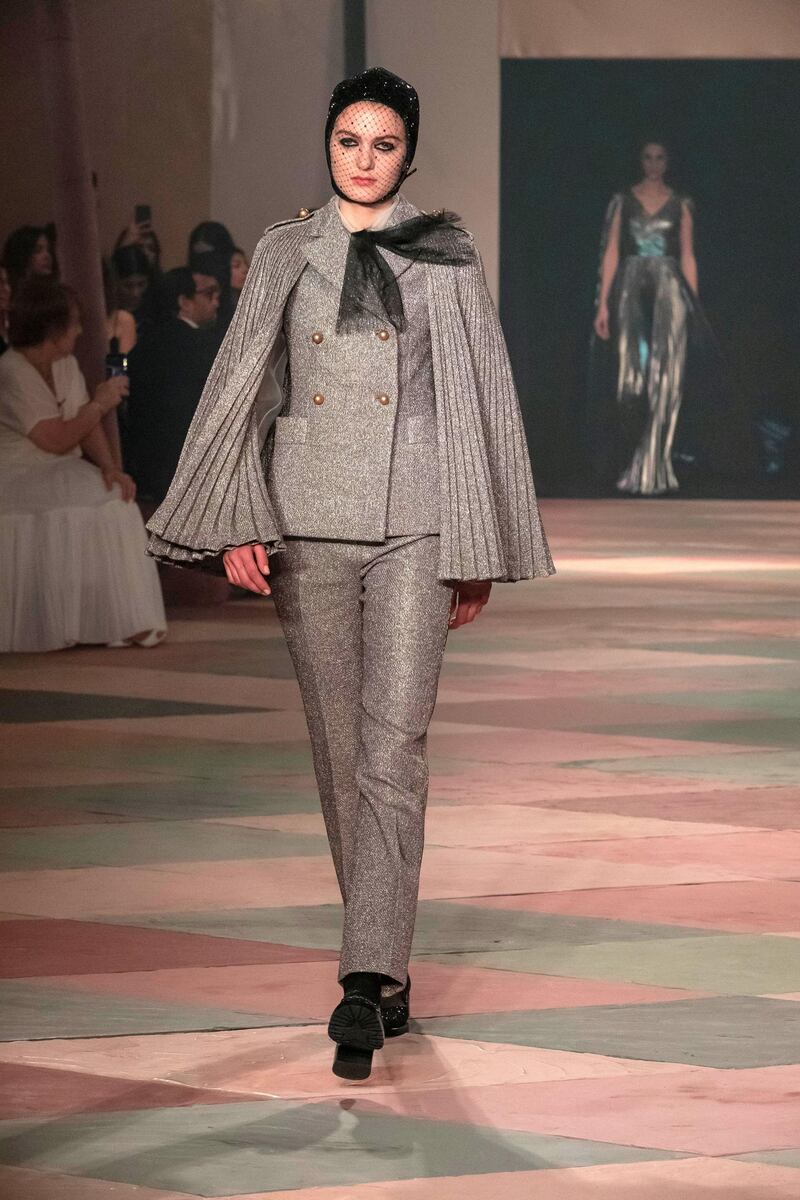The Dior circus rolled into town this week, as the storied French maison took over Dubai's Safa Park. Inside a full-sized big top strewn with string lights, Maria Grazia Chiuri, the maison's artistic director, presented her astonishingly beautiful circus-themed haute couture show, originally presented in Paris in January, with 15 additional looks created specifically for the region. The new pieces both opened and closed the unprecedented show, perfectly bookending the existing collection, building new shapes and even colours into the looks.
I am sitting with Chiuri, the first woman ever appointed to lead the brand, during the all-important fittings ahead of the show. I can’t help but wonder whether it was daunting to be asked to take on the illustrious role of artistic director of the house of Dior.
On experience
“I don’t know why, but I wasn’t terrified at all. That is the crazy thing, but I absolutely was not terrified,” Chiuri tells me. “Probably, it’s about age. When you are young, with no experience, you are more terrified because you feel you have to demonstrate something. But I said: ‘OK, I will try, and if I am wrong, what will happen? Nothing.’
“When you are older, you don’t worry about making mistakes, because you know that, in life, it is normal. And you have enough confidence in yourself to be human, and make mistakes.”
As we talk, models parade up and down in the outfits that will be sent down the runway the following day. This is haute couture, after all, and fit and construction are of utmost importance. We are mid-conversation, when she suddenly exclaims: “I don’t like these shoes, change the shoes.” Realising she is talking about a model off to our side, I compliment her on being able to pass judgment out of the corner of her eye.
“It’s many hours [of practice] I can tell you,” she says, laughing. “My team is obsessed with these shoes, and we need to find a solution to them. I really don’t like them with this dress. But yes, I have a very good eye. This is experience.”
'I wanted to challenge myself, be outside my comfort zone'
Clearly, this level of knowledge isn’t developed overnight. Thirty years ago, Chiuri started working at Fendi, bringing in the man who would become her long-term collaborator: Pierpaolo Piccioli. The pair moved to Valentino 10 years later, in 1999, working first with the brand’s founder Valentino Garavani himself, before being named joint creative directors in 2008.
“When I started at Fendi, I was very lucky, I really worked in the idea of a family. When I decided to move to Valentino, it was because I wanted to challenge myself, be outside my comfort zone. But we were lucky, we found another family.
“It was different to Fendi, but it was a really beautiful experience. I took care of Valentino like it was my house. Like it was more than my house – like my brand. It was so close to me, it is part of my memory and my history. I was there 17 years. When they asked us to become creative directors, I was in doubt – it was like someone asking you to take the place of your father or mother. Not only for the responsibility, but for the respect you have for them.”
Together, Chiuri and Piccioli transformed Valentino from a respected but outdated house into one of the most desirable labels around. Chiuri is frank about her reasoning for bringing in a co-designer. “When I chose to work with Pierpaolo, it was a different moment, I was a different woman. It’s about how you see yourself. Initially, it was very hard for me, I didn’t like doing interviews or taking pictures – I kept thinking: ‘This is not my job.’ But you have to understand the role of creative director, and that’s what was great with Pierpaolo; he is a bit more smart than me.
“But I learnt to be on stage. I learnt to talk about the collection, it’s an evolution of my personality. I understood, through my job, more about myself … this job has been my analyst, to understand who I am, my values, my creativity.”
Of course, given her breathtaking work for Dior, it is hard to believe the house was ever outside Chiuri’s area of comfort. Not one to be content with recycling the same ideas, she has instead challenged the house – and it customers – to the core, and seems to have grown into the role with each passing collection. Under her hand, Dior has gone from being a brand centred around beautiful clothes to one that still has romance and poetry at its heart, but is now also about female empowerment.
Empowering other women
“When you grow up in Italy, or any country, it is not easy for women. I am a privileged woman so I can discuss this, but when you are young, you don’t realise how many conditions you have that come from the past. You believe you are free, but it’s not true.
“When my daughter turned 16, I saw in her all the conditions that come from the culture, and I said: ‘Oh, my god, again?’ In that moment, I started to become a new Maria Grazia, and I said: ‘OK, I don’t know if it is possible, but maybe fashion can help.’”
Her opening salvo came with the “We should all be feminists” T-shirts from her debut spring 2017 collection, a declaration taken from the work of Nigerian author Chimamanda Ngozi Adichie. It set a tone that Chiuri has steadily built on, season by season. When she showed her spring 2019 haute collection in Paris, that message of female empowerment took the form of an onstage performance by Mimbre, an all-female acrobatic troupe who balanced nimbly on each others’ shoulders, hammering home the message that women should, quite literally, support and elevate other women.
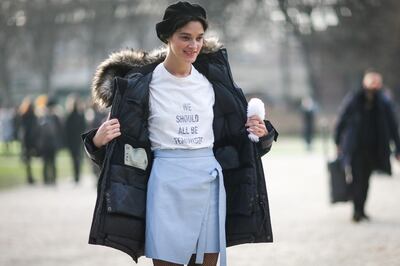
Although her work for Dior is infused with feminism, the real beauty is in the way she marries that message with the brand’s softer, more romantic heritage. “Part of me is a little bit tough, and I like things that are strong. But on the other side, I like things that are very fragile, very graceful. It’s a new way to feel nostalgia, something that is beautiful, but not sad; it is an emotion. Like feeling in love with the past. It is soft, light and poetic.”
A perfect partnership
With that in mind, Chiuri is clear that the legacy of the house can be translated, but never forgotten. “The Bar jacket is a Bar jacket, the kitten heel is a kitten heel. I cannot change them. I take the codes of Dior, and I use them like a young, contemporary woman, in an easy way. Fashion is more about code, less about the object, otherwise there is the risk you just make a reproduction of the archive. It has to be a conversation.”
Alongside Chiuri at the fittings is milliner Stephen Jones, the man behind every hat and headpiece seen at Dior for the past two decades.
“I have been designing for Dior since 1997, and so when Maria Grazia came along, I went and asked: ‘Do you need me?’ And she said no. Then she tried on one of my hats, and was like: ‘Actually, yes, come back,’” he recalls. Since then, the pair have collaborated on all the brand’s shows, creating everything from rebellious berets for autumn/winter 2018 to the ethereal masks of Surrealist art in haute couture spring 2018.
Bringing their latest collection to Dubai
“For this collection, Maria Grazia wanted everything matte. We were discussing what to do for the headpieces, looking at all the different hats of the circus, then Maria Grazia said: “I want a cap, like Pierrot.’”
Tying in with the circus theme, Pierrot the clown was a character from the commedia dell’arte of 17th-century Italian pantomime and spawned Paul Legrand’s tragic mime of the 1800s. “Then we were talking about what fabric to use, and they were looking at the very shiny shoes, and I said: ‘Why not make it shiny?’ Also we did veils with two formations of crystals. One is like tears, because Pierrot can be either happy or sad.”
The hats appeared again as part of the expanded collection in Safa Park, and Chiuri revisited the iconic Bar jacket for the Middle East, now in metallised eau de nil wool and with a sunburst pleat cape. Recut to make a playsuit in one look and lengthened into a minidress in another, this was history, updated.
Romantic dresses swished past in fluid pleated metallic, in shades of pewter and muted peacock, which were both cut long and majestic (think Elizabeth Taylor in Cleopatra), and short and flirty, over a shredded tulle petticoat. A harlequin suit in accordion pleats, which stood up and around the model, came in a melange of faded tones, before the palette drifted back to Chiuri's favoured neutrals. One dress – in ashy black over nude tulle – was almost ethereal, with hand-cut flowers crushed between the layers, like petals pressed in a book.
“When you press a flower in a book, it is part of your memory. This idea of time, of Dior, of a garden. But the memory of a garden,” Chiuri explains. Another gown was in smoky midnight blue, caught with gold stars, of which she says: “The colours have mixed with a shiny element, because we don’t like to define them, we like the idea of fragility.”
For the finale under the big top, the dress that drew to an end the entire visual experience carried an aptly theatrical note. A polka dot bodysuit, worn with a panelled skirt, and topped with a trailing cape of ruffles that stretched out 10 feet behind the model as she walked, it was – as expected – a delight. Showy yet understated, bold yet delicate, it was, like its creator, a thing of beautifully interwoven and very modern contradictions.
